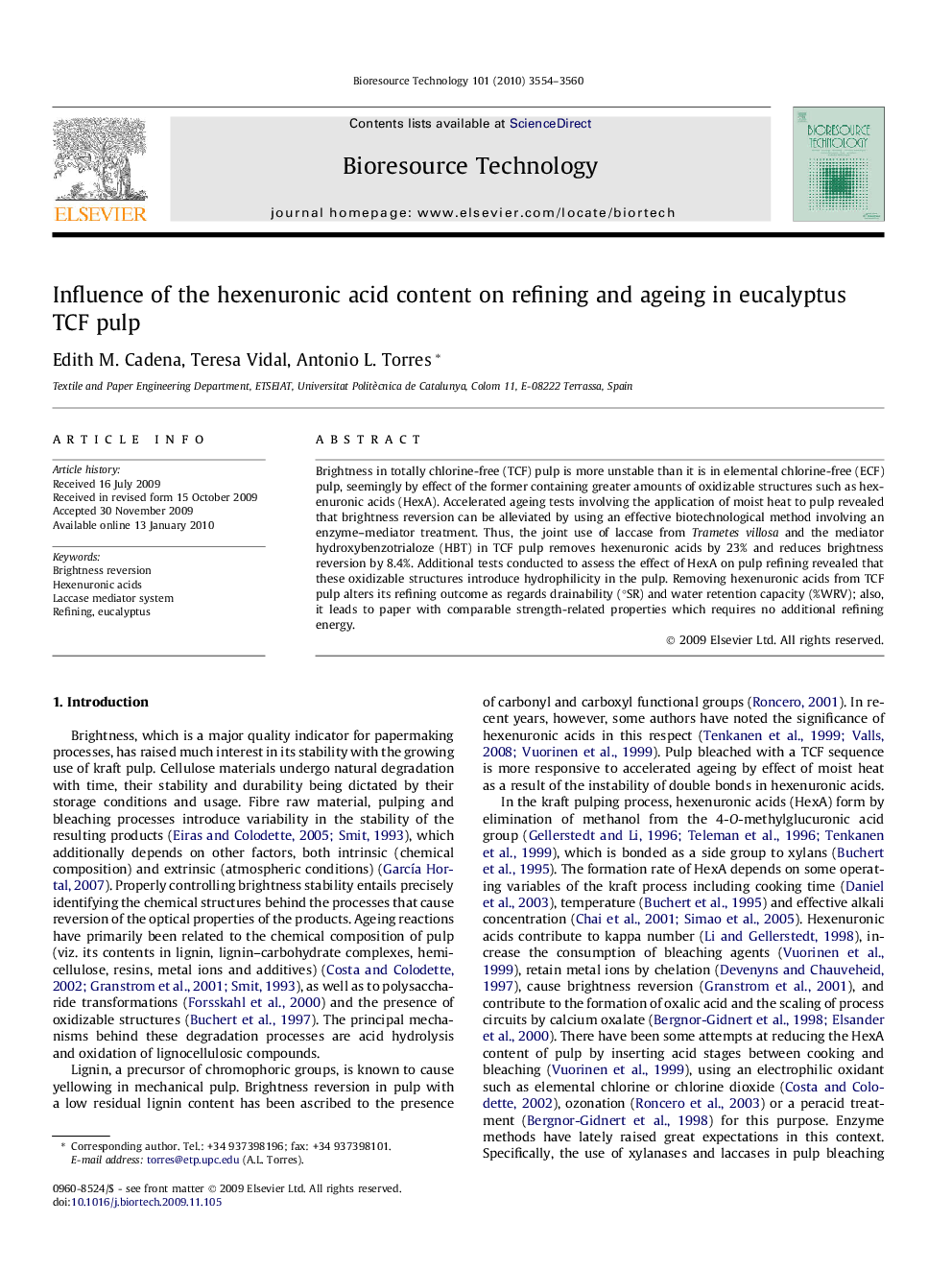| Article ID | Journal | Published Year | Pages | File Type |
|---|---|---|---|---|
| 683275 | Bioresource Technology | 2010 | 7 Pages |
Brightness in totally chlorine-free (TCF) pulp is more unstable than it is in elemental chlorine-free (ECF) pulp, seemingly by effect of the former containing greater amounts of oxidizable structures such as hexenuronic acids (HexA). Accelerated ageing tests involving the application of moist heat to pulp revealed that brightness reversion can be alleviated by using an effective biotechnological method involving an enzyme–mediator treatment. Thus, the joint use of laccase from Trametes villosa and the mediator hydroxybenzotrialoze (HBT) in TCF pulp removes hexenuronic acids by 23% and reduces brightness reversion by 8.4%. Additional tests conducted to assess the effect of HexA on pulp refining revealed that these oxidizable structures introduce hydrophilicity in the pulp. Removing hexenuronic acids from TCF pulp alters its refining outcome as regards drainability (°SR) and water retention capacity (%WRV); also, it leads to paper with comparable strength-related properties which requires no additional refining energy.
